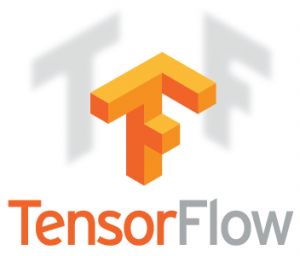
Deep learning platform – Tensorflow
 Watching the rapid pace of technological developments like deep learning, throughout the last couple of years, makes me think that we’ve reached another major turning point for our society. Artificial intelligence, big data, machine learning, all of these innovations have made our lives easier and more exciting. It will get a lot more interesting, trending right now is deep learning, which is becoming increasingly used throughout the world of technology, and no doubt will be a major technology for our future. I am sure about that!
Watching the rapid pace of technological developments like deep learning, throughout the last couple of years, makes me think that we’ve reached another major turning point for our society. Artificial intelligence, big data, machine learning, all of these innovations have made our lives easier and more exciting. It will get a lot more interesting, trending right now is deep learning, which is becoming increasingly used throughout the world of technology, and no doubt will be a major technology for our future. I am sure about that!
According to a MarketsandMarkets report, the deep learning market is expected to be worth $1,772.9 Million by 2022, growing a CAGR of 65.3% between 2016 and 2022. This is huge! Now, many people might think that these advanced techniques is out of their reach, but that is not true. A few years ago, Google developed an open source deep learning framework that that is now available for everyone.
Meet Tensorflow!
Google developed its deep learning framework, Tensorflow, in November 2015. Since then, they have continuously improved the framework, making it one of the most popular AI programming project on software code-sharing service. Google has shared its machine intelligence library to all of us.
Exploring Tensorflow’s perks!
More and more businesses are starting to see the advantages that Tensorflow delivers, and are increasingly starting to using the innovative deep learning framework. Let’s take a quick dive into these perks:
- Portability – One of the main concerns that companies are burdened is portability. However, Tensorflow overcomes this challenge. The platform runs on CPUs, GPUs, servers, and mobile computing platforms, meaning that you are not bounded by hardware. Very interesting!
- Auto Differentiation – The automatic differentiation feature enhances gradient-based machine learning algorithms, allowing you to design your predictive model’s architecture and blend it with your objective function and add data to it.
- Performance – Enhancing performance has always been on the bucket list of every business owner, and Tensorflow apparently delivers it. The platform supports queues, threads and asynchronous computation allowing you to get the most out of your available hardware.
Using Tensorflow!
Tensorflow is a multitasking platform that allows businesses to use it for multiple applications. Are you curious to find out some of them?
- Image Recognition – Today, almost every industry use image recognition to enhance their productivity, efficiency or performance. From Manufacturers and Social Media, up to Automotive and Healthcare, every sector has found the great advantages that face recognition, motion detection or image search has to offer. Tensorflow has an advanced and complex image recognition algorithm that identifies and classifies random objects at a larger scale.
- Video detection – Closely related to the above use case, Tensorflow has found its point in video detection as well, improving efficiency for industries that need high-level security systems, and not only.
- Voice Recognition – This might be one of the most common use cases of the Tensorflow platform. Currently, voice recognition is being used by industries such as automotive, manufacturers, security, Aviation and many other. End-users are also enjoying it through Siri or Google Now, raising the user’s experience to a higher level. Tensorflow’s ability to provide proper data feed and neural networks recommend it as being an efficient platform that provides voice recognition solutions.
- Text–based applications – Detection is the keyword that best describes Tensorflow’s abilities. Text-based applications such as thread, fraud or language detection are again some use cases where Tensorflow has found its utility.
Google developed a complex deep learning platform that can be of great help for many businesses. Now that you know about Tensorflow, are you interested in using it to solve problems? I’m interested to hearing from you.
Photo source: https://www.tensorflow.org





